The sari, with its folds and layers, holds more than just fabric; it preserves the stories of generations and skills passed down over time. Draping it is an art — a sequence of gestures repeated until they become muscle memory. The act of draping is a subtle homage to the cultural tapestry that has withstood shifting trends.
While eager to embrace tradition, younger generations often find it challenging to master the draping of a sari as their mothers and grandmothers did. As this garment becomes a regular part of their wardrobe, it is also being redesigned and reintroduced to be more accessible and less intimidating.
In recent years, saris have taken a new form, known as the ready-to-wear sari, a trend popular on social media. These saris can be easily clipped or fastened, making them quick and effortless to wear, with no need for pins or extra adjustments.
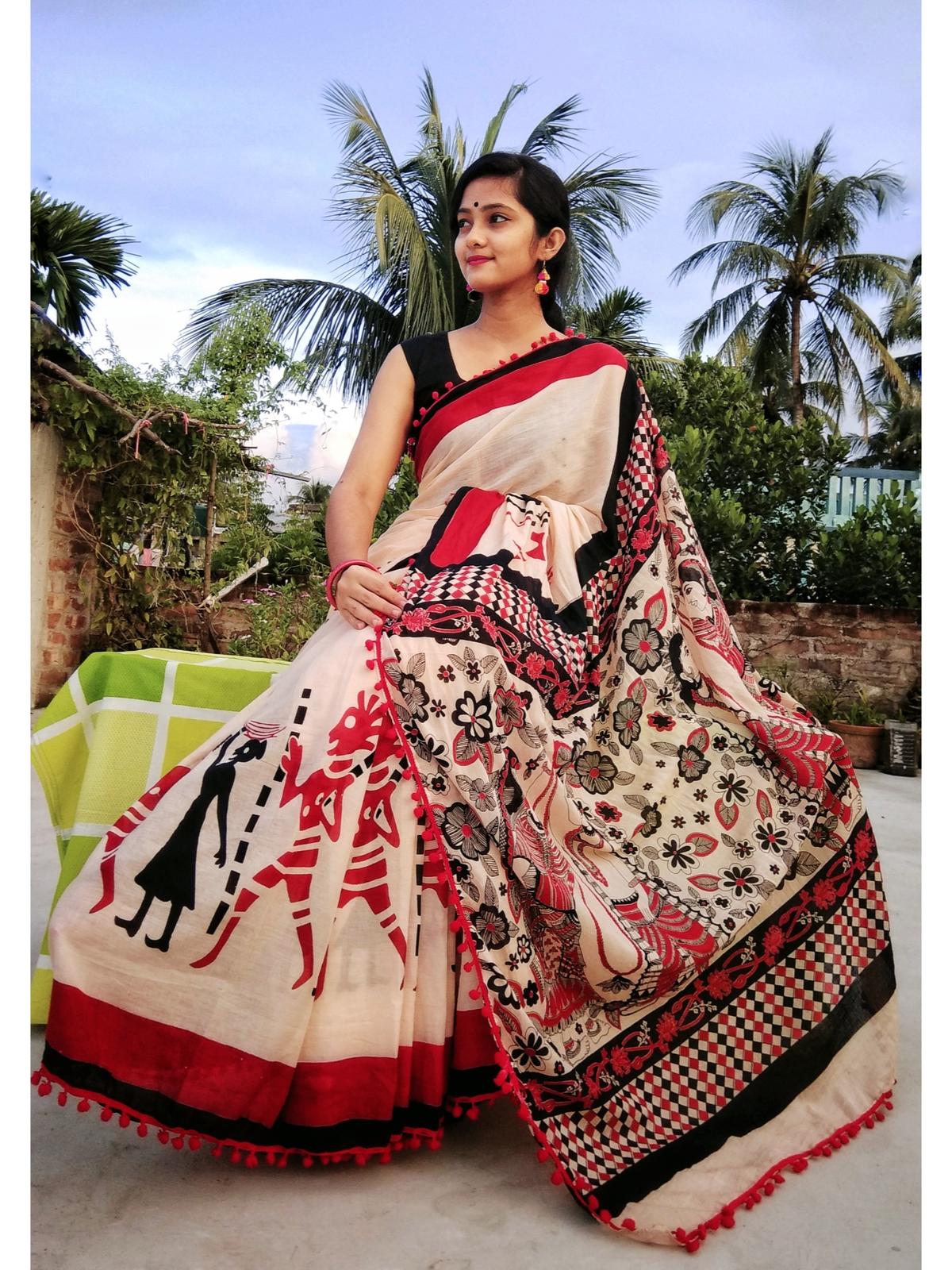
Ready to wear saree from Fashionous | Photo Credit: Special Arrangement
The ready-to-wear sari comes in many types and sizes — they can be easily customized by taking a few measurements. Many tailors around the city, who stitch sari blouses now provide this service.
One such boutique is Velachery-based Fashionous. What started as a fashion accessory e-commerce platform in 2015, has now grown to become a larger entity that includes customized tailoring of all kinds. “Around 2017-18 when we were experimenting with customized tailoring, one of the tailors we were partnering with told us about this trend of ready-to-wear saris, and we started doing it as an experiment. In the last couple of years, we have seen a huge rise in demand,” says founder of the brand Antony Ponniah Joseph.
Over the last two years, they have converted more than 1,500 saris, especially before the festival and wedding seasons. Fashionous also offers an Augmented Reality (AR) tool on their website, allowing customers to visualize the final outfit online before placing an order. “Our service is fully online, so customers can provide measurements remotely, which brings in orders from overseas too,” Antony adds.
Another Chennai-based boutique that found its roots in customized tailoring is Sushmita Agarwal’s wearshush. The contemporary clothing brand specializes in dresses, co-ords, shirts and more. Recently, Sushmita forayed into the world of ready-to-wear saris. “I saw that there was a demand for easy-to-wear saris, especially among the Gen Z because it is convenient. We take saris from customers and convert them into ready-to-wear,” she says.
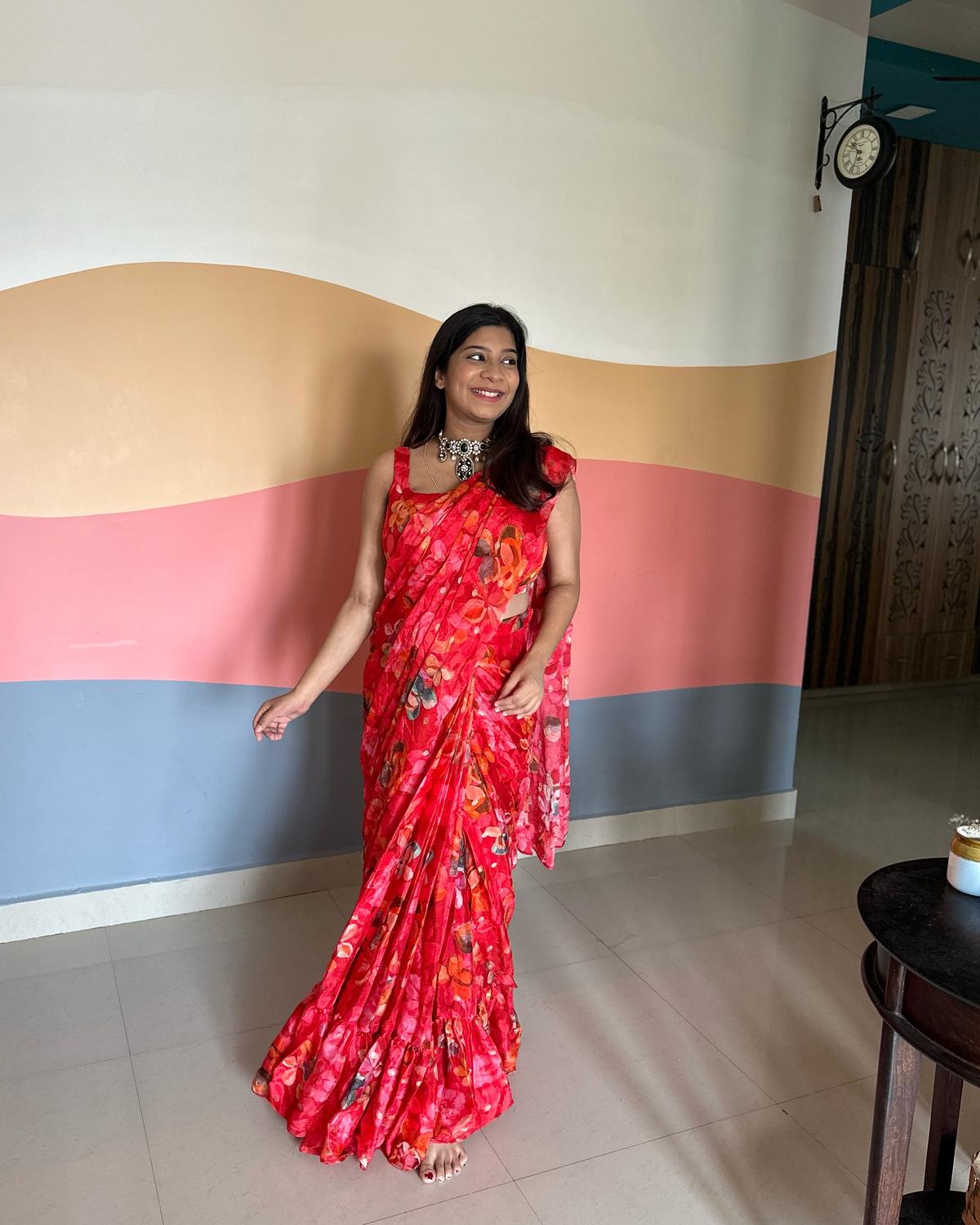
Subhiksha Venkat in a ready to wear sari | Photo Credit: Special Arrangement
Finding skilled tailors for customized outfits in the city can be challenging. Chennai fashion influencer Subhiksha Venkat, who reviews tailors in the city says this is more than just another Instagram trend. “I wear ready-to-wear saris quite often. Especially during Navaratri when I’m working full-time, and I have to immediately get ready to go golu hopping in the evening, this has been very helpful,” she adds.
Many boutiques across the country now offer these in standardized sizes, with some also including a stitched blouse and underskirt. One such brand is the WiMO Ready To Wear Saree. “Back when we started the brand, the only kind of ready-to-wear saris in the market were party-wear. We wanted to make a regular sari that can be quick to wear,” says co-founder Hema Hardikar who started the brand along with her husband Hemanth. “We source our saris from all over the country — Varanasi, Surat, Chettinad, Kanchipuram, Coimbatore and we don’t offer rush orders. We tell the customers that each sari is made to order according to their measurements and requirements and will take five to 10 working days,” says Hemanth.
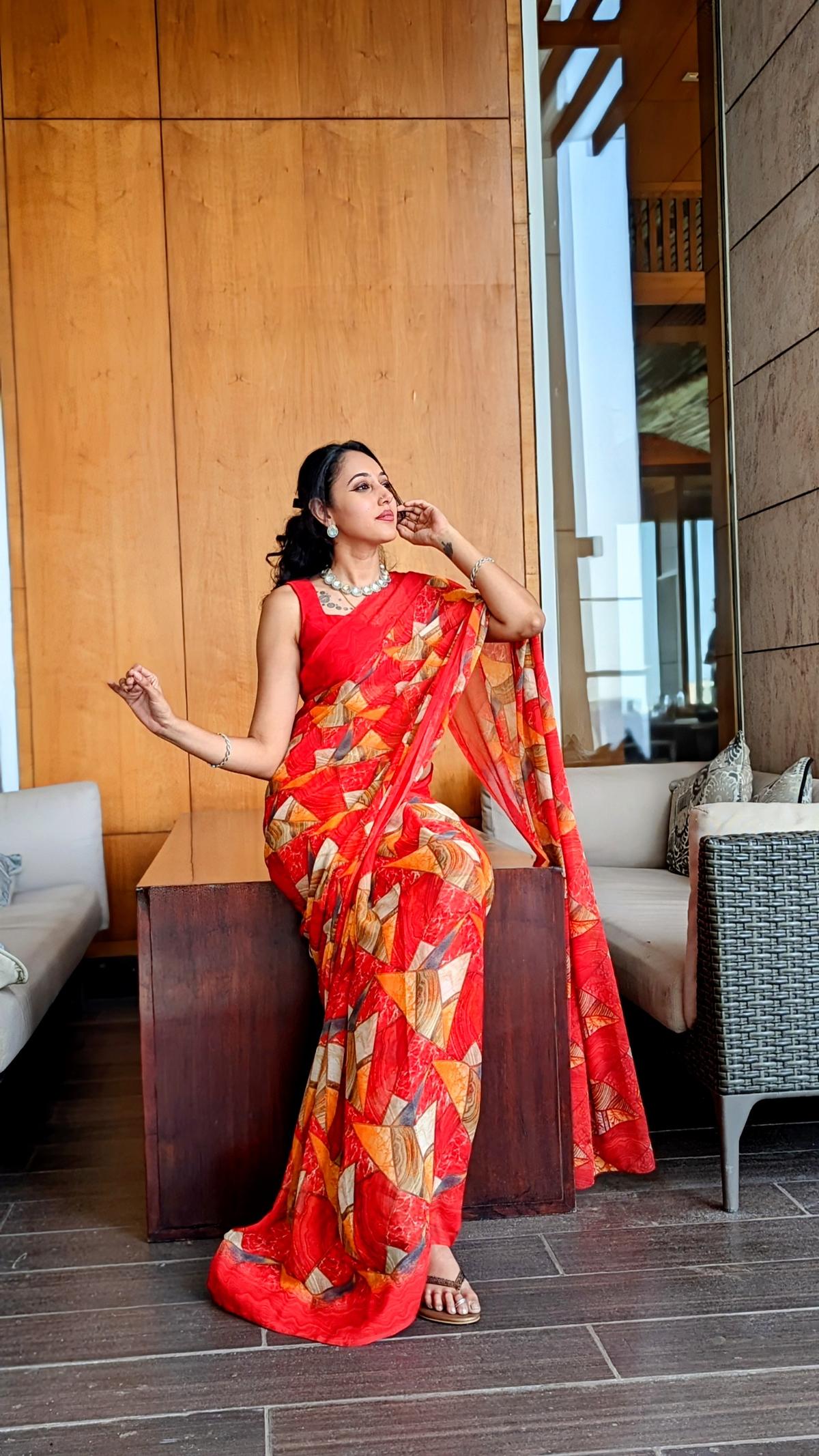
Ready to wear sari from WiMO | Photo Credit: Special Arrangement
Door step solutions
If the permanence of cut and stitch scares you about potential damage to the sari, but you still want to reap the benefits of a quick-to-wear sari, the solution might be hiding in plain sight in your neighborhood ironing shop. Many ironing shops in the city are now offering pre-pleating services where they take one’s measurements, pleat the saris, pin them in place and iron them, so all you need to do is tuck, wrap and be on your way.
“There has always been a demand for sari draping and I used to do it as a service. During the pandemic, I watched YouTube tutorials and learned how to iron the pleats and do box-folding,” says Mary Vinolia who runs this service from her home in RA Puram. “I take measurements when customers come, so I know how much to pleat and what length they prefer their pallu at,” she says adding that she returns the pleated and ironed sari to the customers in one hour.
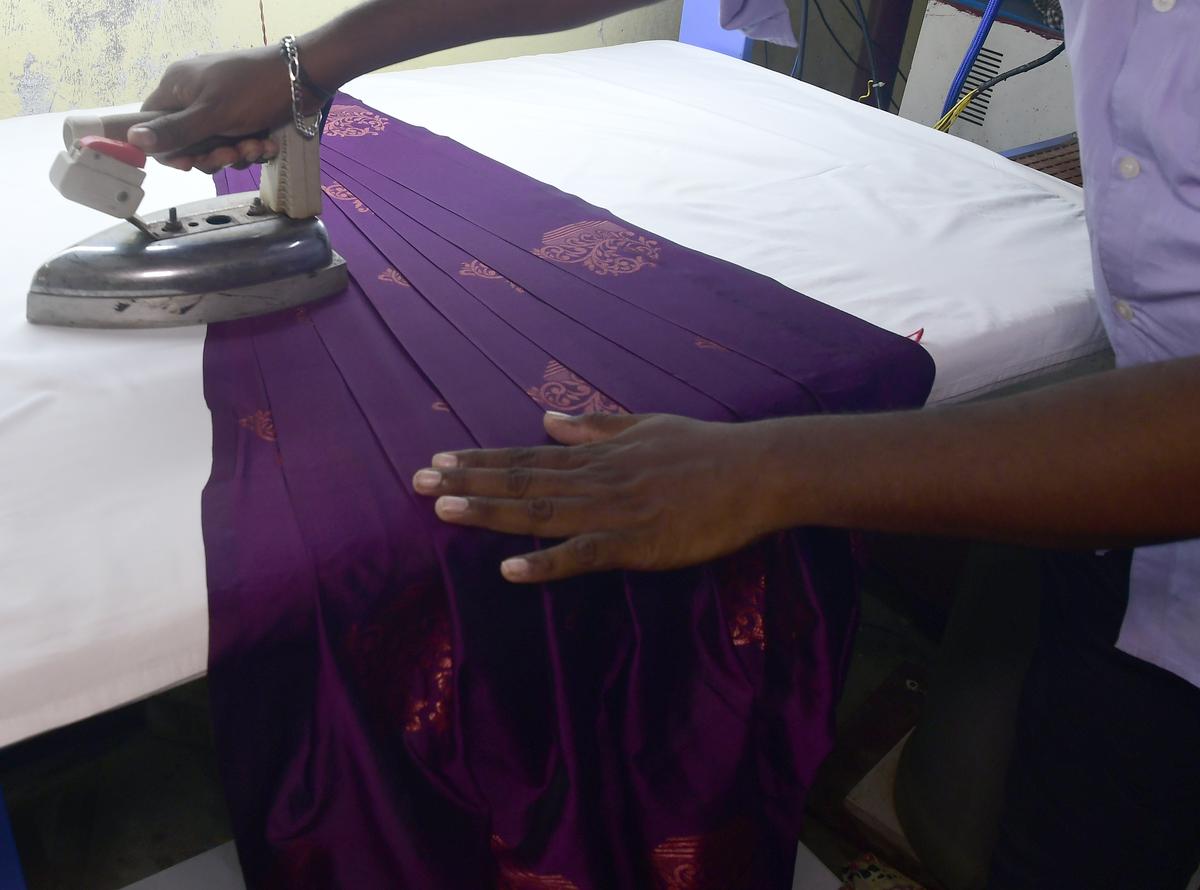
Saree Steam Ironing | Photo Credit: SRINATH M
While a plethora of options like these are available for women, men are often left behind. However, in this trend of making traditional wear accessible, men got to the destination before women. “In 2015, I went to a college to attend a function. It was disheartening that none of the youngsters were wearing a veshti. When asked why, they said that it was uncomfortable to manage and the lack of a pocket was inconvenient,” says KR Nagarajan, founder and chairman of Ramraj Cotton, which started making Velcro veshtis for kids in 2012.
“We extended the same concept to adults in 2015 and added pockets to the vest. This is the third generation of young adults we are catering to and each generation had their own needs. We introduced the white ready-made shirts for the previous generation, but now the requirement is a pocket to keep their cell phones in,” he adds.
Kids block printed veshti from Hastha | Photo Credit: Special Arrangement
The everyday veshti that stood as a symbol of elegance for the South Indian man became more accessible with the addition of a simple velcro.
“A few years ago, a gentleman we knew complained to us about how women have so many interesting and colorful outfit options, but there’s barely any choice for men. That’s when I included a block-printed veshti to our brand,” says Divya Vigneshwaran, founder, Hastha. “I work with NGOs and employ adults with special needs and do block printing on a range of clothes. We buy the velcro veshtis from Ramraj and block print on them as well,” she says, adding that to address the issue of over-consumption, they also take veshtis from customers and do block printing on them.
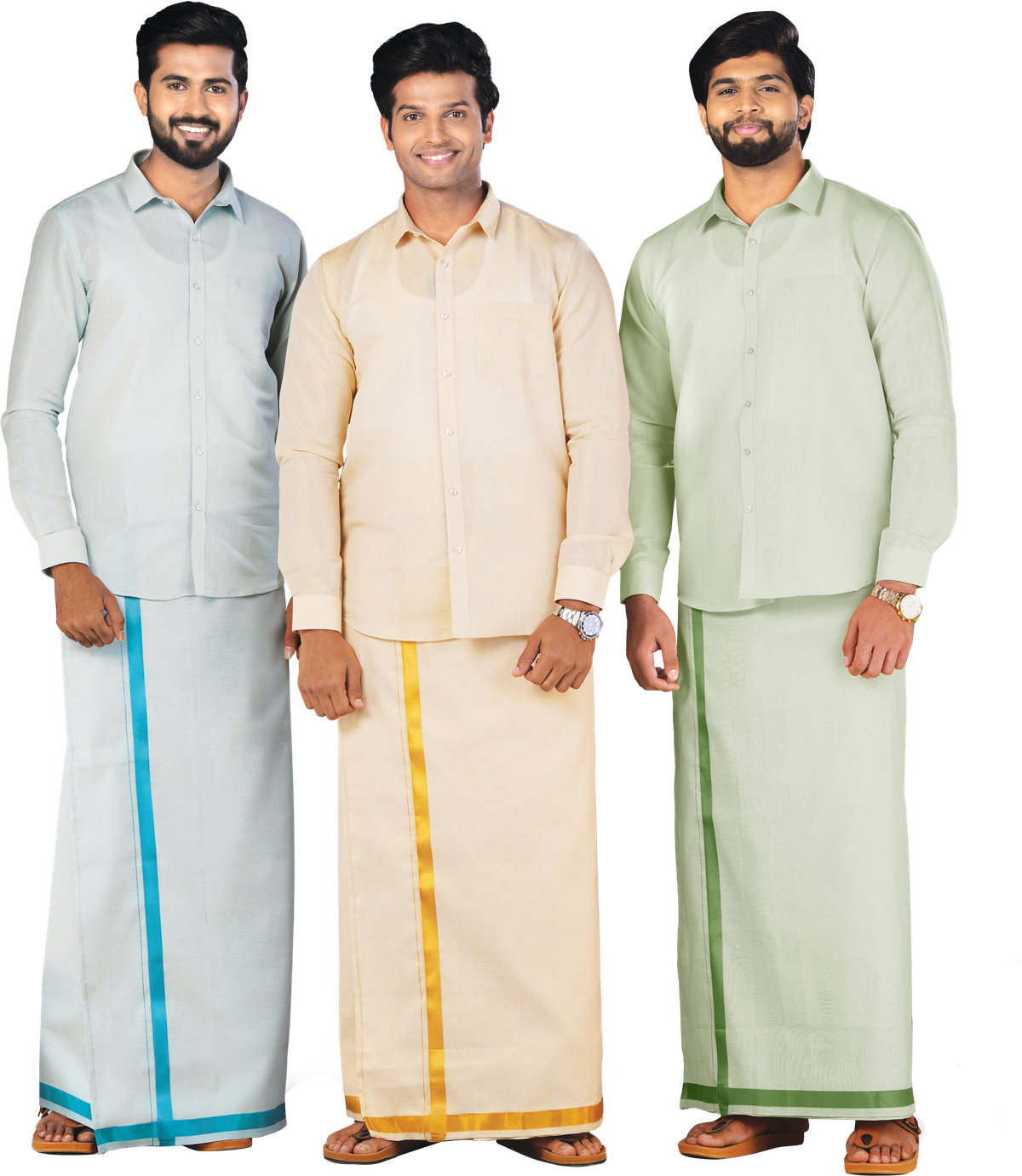
Velcro veshtis from Ramraj Cottons | Photo Credit: Special Arrangement
The evolution of traditional wear reflects a larger shift toward adapting heritage to meet contemporary lifestyles. Beyond convenience, this reimagining of traditional attire fosters a renewed sense of identity. By making small adjustments, designers, tailors, and artisans are preserving the legacy of traditional clothing, allowing it to thrive as a part of everyday life.
Published – October 29, 2024 04:28 pm IST

